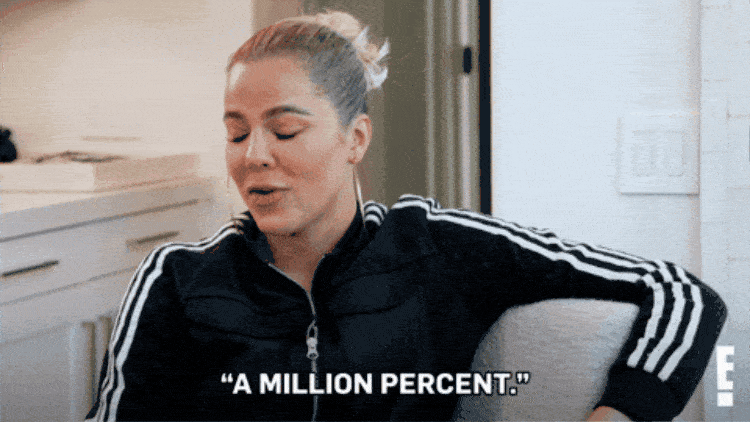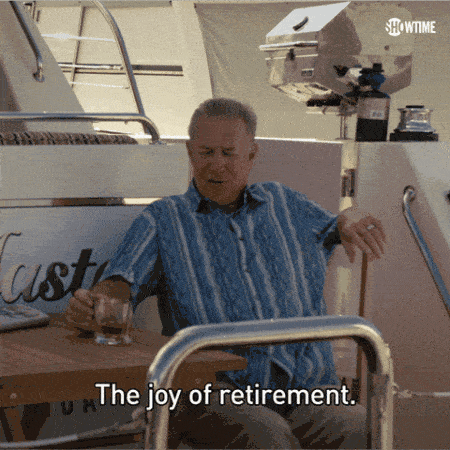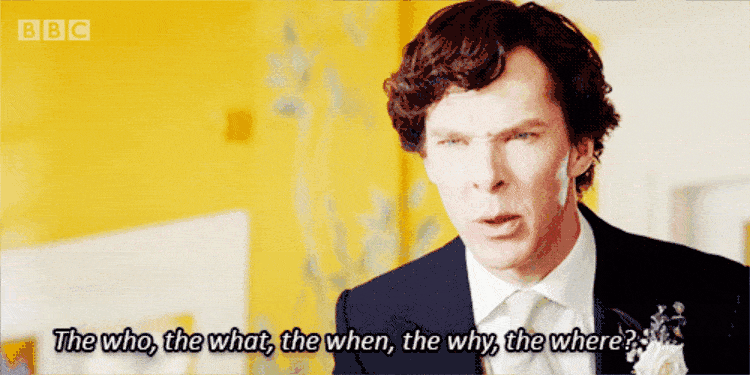
Table of Contents
- Introduction to Convertible Term Insurance
- What is Convertible Term Insurance?
- Benefits and Key Features
- Comparing Insurance Options
- Term vs. Whole Life: A Comprehensive Comparison
- Why Choose Convertible Term Insurance?
- Policy Conversion Insights
- How Convertible Term Insurance Works
- Guaranteed Insurability: Securing Your Future
- Practical Examples and Case Studies
- Jason's Conversion Journey: From Term to The And Asset
- Scenarios: Choosing the Right Focus Based on Life Stage
- Designing the Right Policy for Your Needs
- Death Benefit-Focused vs. Cash Value-Focused Policies
- Setting Goals for Policy Conversion
- Conversion Process Made Simple
- The 7 Steps of Converting a Term Policy
- Buying Convertible Term Insurance
- Key Considerations: Who, What, How Much, and When
- Why the Right Carrier Matters
- Expert Advice for Making the Best Decision
- Talking to a Financial Professional
- Exploring Unique Conversion Options
- Conclusion and Next Steps
- Final Thoughts on Convertible Term Insurance
- How BetterWealth Can Help
Convertible Term Life Insurance
Term insurance is the most inexpensive insurance option for protecting your family.
Convertible term insurance can be converted into a permanent life insurance product within the conversion period on the term policy. If the policy is active within the conversion period, you can convert to a permanent product with the same carrier regardless of your health or insurability.
Many of our clients end up getting both permanent and term insurance to get the amount of death benefit they feel is right for their family. Others may not be in a good position for permanent coverage right now. Maybe they cannot save enough or need to get rid of suffocating debt. Maybe they are in transition, enduring divorce proceedings, or experiencing trauma in life. There could be many reasons that make a permanent insurance policy sub-optimal for them today.
Whatever the reason, a great temporary alternative to permanent insurance is convertible term.
Term vs. Whole Life
Term Insurance
People rent homes for a defined period of time. When you’re done renting the house, you have no equity and walk away. That’s similar to term insurance. You pay your premiums for 10, 15, 20, or 30 years. When it’s all said and done, you have no access to the cash you’ve paid for it and no coverage. You effectively “rented” a death benefit coverage for your family for a specific period of time at a set cost.
When you own a house, you have a mortgage. As you continue to pay off the principal, you build up equity. That’s similar to permanent life insurance. As you make your premium payments, the cash value (similar to equity) builds up inside that policy. The death benefit continues to grow, and as your cash value grows, you can start borrowing against the cash value inside of the policy. Unlike term, the death benefit lasts your entire life.
Many term insurance policies don’t allow you to convert. If you buy basic term insurance via an online quoting tool or buy term from the same company that insures your car, it will likely not give you the ability to convert. Even if it does, the chances that your term policy will be able to be converted into a permanent asset are extremely low.
Whole Life
What makes The And Asset unique is the type of product used, the carrier that provides it, and how the product is structured.
If you want to have an And Asset-style policy focused on cash value accumulation, which can be used from day one, you need a whole life product provided by a mutual insurance company that is specifically designed for cash value accumulation. The list of companies out there that can do this is tiny. Out of that small pool, we choose to work less than 10 of those.
Getting convertible term insurance with a mutual carrier is essential. To make things more complicated, not all mutual carriers allow you to convert into whatever policy design you want in the future. Some carriers require a certain percentage of your premium to pay for base whole life insurance, while others allow your agent to build the exact policy you want. That’s why working with a team that knows these nuances in the insurance space is so important.
Guaranteed Insurability
Guaranteed insurability means you can lock in your health rating today for tomorrow.
If you get sick or have an official medical diagnosis, even to the extent of getting stage four cancer, you can take this term policy to the insurance company and convert it into a permanent life insurance contract.
Your age and health rating determine the cost of your base premium. You can’t stop aging, but you can lock in your health rating for the future while you’re younger and likely healthier. Even some conditions that would otherwise be grounds for getting declined for coverage are overlooked if you had locked in your health rating earlier.

What Size Policy Can You Convert Into?
It depends. You can convert all or part of your convertible term’s death benefit into a permanent insurance policy.
Every carrier is different in how they do conversions. Still, the basic idea is that the risk that the insurance carrier took on with the initial term insurance cannot be exceeded in a conversion to a new product. If it is exceeded, you must qualify (full underwriting) for the additional risk the insurance company is taking on.
Let’s look at an example client of ours:
- Jason was a 27-year-old entrepreneur who wanted to protect his young wife and growing business with term coverage.
- Due to health, Jason received an Ultra Preferred Non-Tobacco rating when he applied for coverage.
- His 20-year term insurance policy guaranteed $2,000,000 of death benefit coverage.
- His $60.21/mo cost was locked in on day one and will continue for 20 years or until Jason converts his policy.
Now, Jason is 30 years old, but he has gained some “new dad weight” and would not qualify for preferred rates anymore. However, due to his convertible term insurance, he can qualify for a whole life policy at the previously attained Ultra Preferred Non-Tobacco rating.

Here’s what Jason did:
- He wanted to contribute $15,000 per year to The And Asset.
- This new policy was converted from a portion of Jason’s $2,000,000 face value to 20-year term insurance coverage.
- Jason had to convert $688,678 of his term insurance coverage to purchase The And Asset, leaving behind $1,311,322 in remaining coverage. In addition to the remainder of the term coverage, Jason separately had a $1,500,000 term policy for 30 years (this will be important later).
- Jason’s premium on the remainder term coverage decreased to about $40/mo due to the drop in term death benefit coverage.
- The new policy was auto-approved as a conversion within 1 week, and Jason had access to over 80% of that initial premium in cash value within 30 days.
- The initial new death benefit for Jason on the whole life policy is $437,505.
Jason experienced an initial loss of total death benefit coverage. Still, due to The And Asset's rapid death benefit growth, his permanent death benefit will double in less than 10 years. Depending on the carrier and how they assess risk, most conversions lead to an initial loss in total death benefit coverage, like this one. In this case, Jason’s total death benefit coverage between these policies dropped to about $1,750,000.
If Jason wanted to convert into a larger And Asset-style policy that required more than the $2,000,000 of coverage he had, he would have two options:
- Requalify for the difference above $2,000,000 with a new application and medical underwriting.
- Or, he could tap into his additional $1,500,000 of 30-year term coverage.
If The And Asset policy he wants is equal to or smaller than the term coverage he has, he will be automatically approved and maintain his health rating in the new whole life insurance policy, just like we saw above.
This same conversion situation with another carrier may yield a different result depending on the policy design, product, and company used.
Death Benefit or Cash Value Focused?
There are generally three ways to design permanent, whole-life policies: Maximize death benefit, maximize cash value, or something in-between.
Policies focusing on death benefit utilize a higher percentage base premium than paid-up additions as a percentage of the policy's annual funding. Cash-value-focused policies minimize the base premium as much as possible, inflate the death benefit as cheaply as possible with term insurance, and fund the difference with paid-up additions. Assuming there is enough convertible term insurance in force, the first thing anyone considering a conversion should do is define their goals.
Defining goals is more important than any other financial consideration when creating the ideal policy. Once goals are defined, we can help determine what design best fits them.
Consider these contrasting scenarios:
- Scenario #1: You’re 55 and your kids are grown up (possibly with families of their own). You’re looking to fund a trust or simply leave a legacy for your family. Your investments are doing well, so you have plenty of money to live on. You don’t need a private line of credit, and mainly just want to secure death benefit. The right policy for you could be an all or mostly-base premium policy.

- Scenario #2: You’re 35 and have a young family. You don’t quite have your whole investment picture figured out yet, but you know you’d like The And Asset to be a part of your overall strategy. You want your money to compound inside a tax-free environment and stay outside of the traditional banking system. More than anything, you want to provide protection for your family in case of an early death. The right policy might be an overfunded, high-cash value policy using paid-up additions.

Something to note: Both prior scenarios generate cash value, which will grow yearly for the rest of your life. The only question is how fast and how much cash value you see early in the policy versus later in the policy.
The Seven Steps of the Conversion Process
- Research if your term policy is convertible and if so, what types of permanent products you can convert into with your insurance carrier.
- Make sure you are still in the convertibility window of your term policy, some policies can be converted anytime in the term, others have a limited window after issue.
- Work with an advisor to decide how much you want to contribute to a permanent insurance policy, or how much protection you want in permenant coverage, and confirm if you have enough term insurance to support it.
- Fill out a conversion application with your advisor.
- If you don’t have enough term insurance for your new permanent policy, you may have to go through underwriting again.
- Wait one week for approval & fund the new policy.
- Decide whether you want to keep your old term policy or surrender it (premiums will be reduced on the remainder of term)
Considerations for Buying Convertible Term Insurance

Who?
Term insurances are pretty much identical across the industry with slight differences in the types of riders available as well as the financial strength and claims paying ability of the insurance company (if your term insurance is 30% cheaper than anywhere else because it is with with ABC Insurance... your family may be paying the cost down the road).
If you are planning on converting into a permanent insurance product at a later date, pay very close attention to the carrier you’re using, the products available, conversion timeframe offered, and the design flexibility upon conversion. Every one of the “big four” mutual carriers have restrictions on conversions that you should consider before buying term coverage.
What Kind?
Getting term insurance means you are renting a death benefit for a defined period of time.
Once the term period lapses, so does your policy in most cases. If it doesn’t, either the carrier will make the same amount of insurance much more expensive or they will give you decreasing amounts of coverage for the same level of premium - these are two options that vary from carrier to carrier but you won’t be required to keep paying past your term.
Convertible term insurance is the same as regular term with one game-changing stipulation: You can convert all or part of your term insurance into permanent insurance during any point of active coverage while capturing the health rating you had when you accepted the term offer. No matter what stage of life you’re in or if your health rating has changed, you can exercise the option to convert.
How Much?
Imagine you’re dead for a second. Now, how do you want your family to experience your absence?
There is the emotional heartache that comes with grieving your death. Who you are can never be replaced. Your spirituality, hospitality, sense of humor, joy, worldview, and vibrant inner life will never be replicated again by anyone else. Then there is the financial heartache of having bills to pay and a funeral director who doesn’t take credit cards but wants a check cashed immediately. That’s a double heartache whammy when it already feels like your world is tilting off its axis a little bit.
Do you want to leave your family just enough money to pay off any debts or mortgage you have? Or, do you want to give them financial breathing room to grieve your death and move forward in life, not backward? Maybe you’d want your family to be able to visit every baseball stadium in the country–just like you’d always wanted. Or, maybe you’d want to fund an all-expenses paid trip to spread your ashes in Yellowstone National Park.
Do you want your spouse to have to go back to work after you die in order to support the family? Does your wife need to go out and find a sugar daddy to pay for all the extracurricular activities for your kids that now seem too expensive? If your kids are homeschooled, do you want your spouse to be able to continue to homeschool them or send them straight to public school?
There is no one right answer to these questions. If you want to give your family years of financial buffer to reckon with your death, a helpful rule of thumb could be to have 20x your annual income in death benefit.
We believe human life is valuable and it is worth insuring. Working with an advisor to flesh out the amount of coverage you need can be very helpful but what we have found is that the best question to ask is the one you ask to your spouse. “How much of my current income do you want access to for our family if I am suddenly not around”?
When?
The younger you are, the cheaper your term insurance will be. Most carriers allow you to purchase it for yourself as young as 18 years old and as old at 70 years of age. Since younger people have a statistically much lower chance of dying, the risk they represent to insurance carriers is considerably less.
Talk to a Financial Professional
Find a professional you trust to help you decide if convertible term is right for you. Ask them for a quote.
Preferably, find a professional that works with different carriers so you can be assured you are getting the best deal possible that also fits your future conversion goals.
At BetterWealth, we work with multiple mutual, dividend-paying carriers that have been around for over a hundred years and have never missed a dividend payment. Schedule a call with one of our wealth coaches today.
Bonus: Some term policies written with other carriers can be converted to a new carrier—this is unique and is often limited depending on the carriers involved and the amount of death benefit being transferred (usually under $1,000,000). If you have a convertible term with a company that is not able to build a competitive And Asset, reach out to us to see if your term coverage could qualify.
Subscribe to receive the latest blog posts to your inbox every week.





